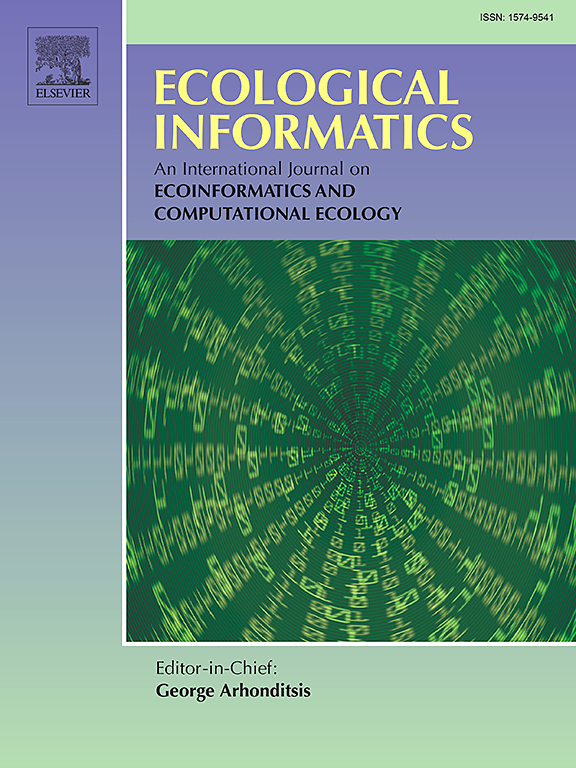Modeling the spread of forest fires through cellular automata by leveraging deep learning to derive transition rules
IF 5.8
2区 环境科学与生态学
Q1 ECOLOGY
引用次数: 0
Abstract
Predicting forest fire spread using simulation models is crucial for the effective management of forest fires. Cellular Automaton (CA) is a key model, and CA transition rules play a decisive role in the effectiveness of the simulation, highlighting the importance of accurately defining these rules. Traditional methods for extracting CA transition rules frequently neglect the intermediate stages of fire development, resulting in less effective outcomes. To overcome this limitation, our study introduces a deep-learning Transformer model to derive more accurate transition rules. The Transformer model excels in capturing fire-spread patterns owing to its robust feature extraction abilities and capacity to manage long-range dependencies, enabling the automatic generation of CA transition rules that more accurately reflect real fire behavior and ultimately improve the simulation of fire spread. Using forest fires in the back mountains of Wenbi Village, Dali City, Yunnan Province, and Sahai Village, Dongchuan District, Kunming City, Yunnan Province as case studies, we initially trained a Transformer model using historical fire data from these areas. We then extracted the CA transition rules from the training results and assessed the model performance using a least-squares support vector machine (LSSVM) model for comparison. The results revealed that the Transformer-CA model surpasses the LSSVM model for predicting fire spread, achieving simulation outcomes that closely align with real fire footprints and improving the overall accuracy, Kappa coefficient and IoU by 4.1 %,5.0 %, 5.5 %, and 3.8 %, 6.0 %,7.0 %, respectively, in the two study areas. This study demonstrated that the Transformer model is ideal for capturing the spatiotemporal evolution of forest fires and constitutes an effective technical approach for fire prevention and management.
利用深度学习推导过渡规则,通过元胞自动机对森林火灾的蔓延进行建模
利用模拟模型预测森林火灾的蔓延对森林火灾的有效管理至关重要。元胞自动机(CA)是一个关键模型,而CA的转换规则对仿真的有效性起着决定性的作用,这凸显了准确定义这些规则的重要性。传统的CA转换规则提取方法往往忽略了火灾发展的中间阶段,导致结果不太有效。为了克服这一限制,我们的研究引入了一个深度学习的Transformer模型来推导更准确的转换规则。Transformer模型在捕获火灾蔓延模式方面表现出色,因为它具有强大的特征提取能力和管理远程依赖关系的能力,能够自动生成CA转换规则,更准确地反映真实的火灾行为,并最终改善火灾蔓延的模拟。以云南省大理市文笔村和云南省昆明市东川区萨海村后山的森林火灾为例,我们首先使用这些地区的历史火灾数据训练了一个Transformer模型。然后,我们从训练结果中提取CA转换规则,并使用最小二乘支持向量机(LSSVM)模型评估模型性能进行比较。结果表明,Transformer-CA模型在预测火灾蔓延方面优于LSSVM模型,其模拟结果与真实火灾足迹非常接近,并在两个研究区域中分别将整体精度、Kappa系数和IoU提高了4.1%、5.0%、5.5%和3.8%、6.0%、7.0%。该研究表明,Transformer模型是捕获森林火灾时空演变的理想模型,为森林火灾的预防和管理提供了有效的技术途径。
本文章由计算机程序翻译,如有差异,请以英文原文为准。
求助全文
约1分钟内获得全文
求助全文
来源期刊

Ecological Informatics
环境科学-生态学
CiteScore
8.30
自引率
11.80%
发文量
346
审稿时长
46 days
期刊介绍:
The journal Ecological Informatics is devoted to the publication of high quality, peer-reviewed articles on all aspects of computational ecology, data science and biogeography. The scope of the journal takes into account the data-intensive nature of ecology, the growing capacity of information technology to access, harness and leverage complex data as well as the critical need for informing sustainable management in view of global environmental and climate change.
The nature of the journal is interdisciplinary at the crossover between ecology and informatics. It focuses on novel concepts and techniques for image- and genome-based monitoring and interpretation, sensor- and multimedia-based data acquisition, internet-based data archiving and sharing, data assimilation, modelling and prediction of ecological data.
 求助内容:
求助内容: 应助结果提醒方式:
应助结果提醒方式:


